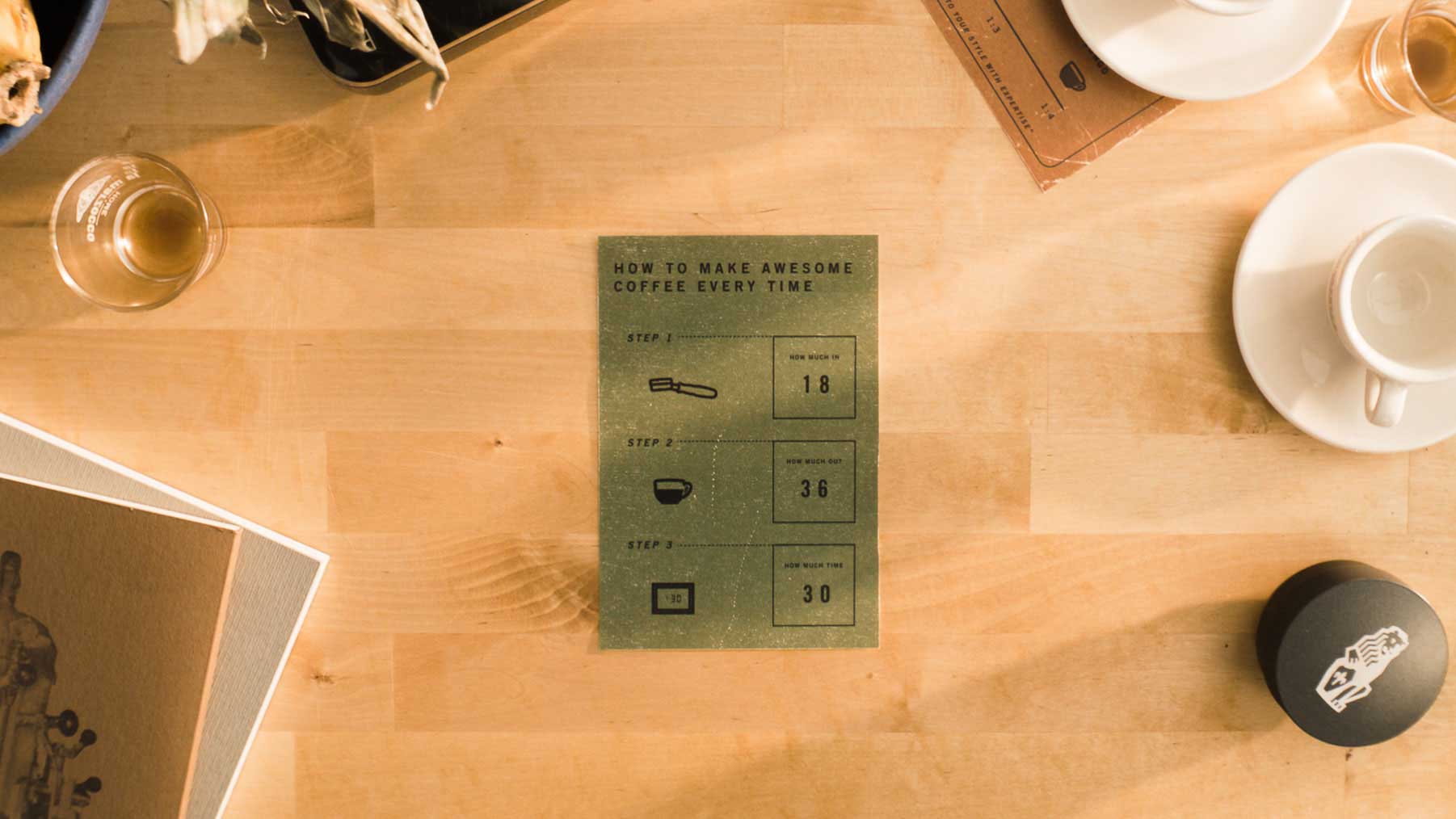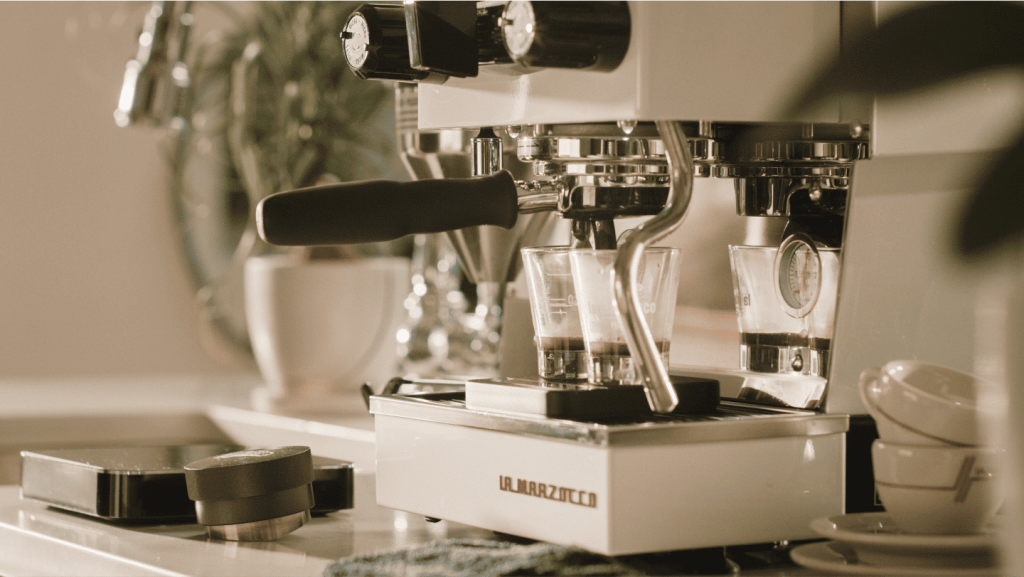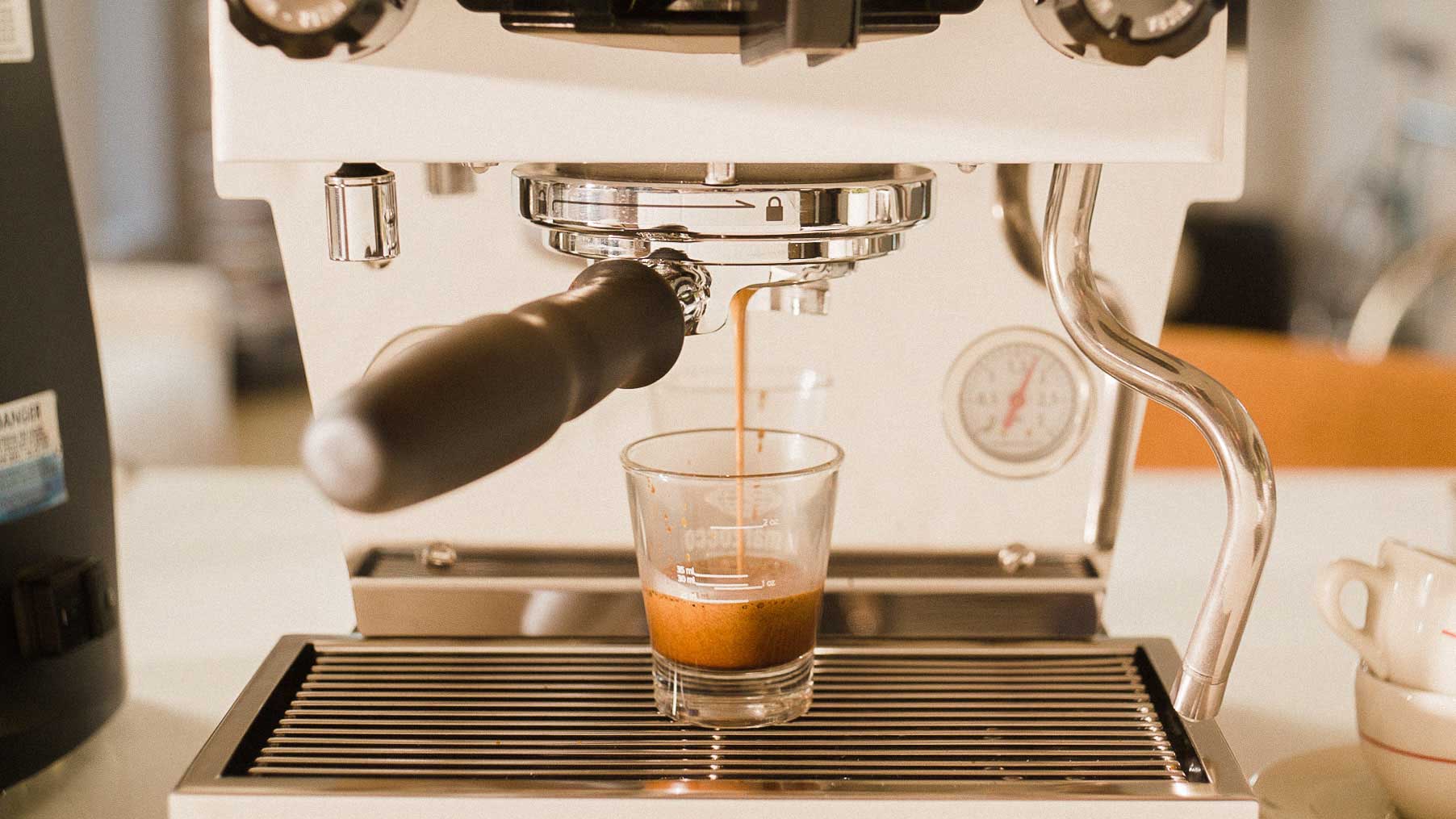Using espresso brew ratios | Dialing in espresso to our ever-evolving taste pallet means that we will be balancing a lot of moving parts. Getting a firm understanding of those variables makes it easier to wake up in the morning and make a quality espresso. Just like in baking, we can use a recipe to get a quality outcome.
This lesson is all about creating a basic espresso recipe that you can go back to time and time again. An espresso recipe involves four variables: ratio, time, temperature and pressure. The Linea Micra will handle a consistent temperature and pressure for us—we typically set those and forget them, unless we’re doing some experimentation. This leaves us to focus on getting our brew ratio and brew time to manipulate.

Generally, darker-roasted coffees perform well with a smaller ratio, while lighter-roasted coffees perform better with a larger one.
brew ratio
A brew ratio is the weight of coffee grounds to the weight of liquid espresso in the cup. By changing the ratio of a shot, we can manipulate the taste and mouthfeel of the espresso.
Measuring brew ratio is easy with a scale. A scale allows for quick and easy measurement of both ground coffee and liquid espresso that ends up in the cup at the end of a shot.
Our chosen brew ratio influences the mouthfeel and taste of espresso and is somewhat of a personal preference. The smaller the ratio, the thicker and more viscous the espresso will be. The larger the ratio, the more stretched-out and thin the espresso becomes. If you have not checked out lesson #4 in this series yet, we recommend trying the experiment in that lesson to get a good understanding of why ratio is so important.
Generally, darker-roasted coffees perform well with a smaller ratio, while lighter-roasted coffees perform better with a larger one.
Borrowing language from Italian espresso nomenclature, a 1:1 to a 1:2 is a Ristretto espresso, 1:2 to a 1:3 is a Normale espresso, and a 1:3 to a 1:4 is a Lungo espresso. There is wiggle room for interpretation here. For context, a cup of drip coffee from a coffee maker is around a 1:15 ratio.

brew time
Brew time is the time in which water is interacting with coffee grounds, and undergoing the process of extraction. Giving water time to interact with coffee grounds allows for extraction to occur. As water hits ground coffee, it begins to pull out salts, acids, sugars, and bitters—in that order. As a general rule, a longer brew time will result in more body and complexity and a shorter brew time will result in less body and less complexity in the cup.
Typically, espresso does best when reaching the target brew ratio in 25 – 35 seconds.
When weighing everything out, we can use brew time as a gauge on the grind size of our coffee. For example, if your espresso starts tasting different, or you notice you’re hitting your target output too fast (less than 20 seconds), change the espresso grind size finer to keep it closer to the recipe you had in mind.

brew temperature & pressure
Temperature: Our recommendation is to choose a temperature and stick to it. La Marzocco machines will be set at 200 °F / 93 °C at the factory and this is the industry standard espresso brewing temperature. The temperature can be adjusted, if a particular recipe recommends it, but should usually stay between 195-205 °F / 90-93 °C.
Pressure: La Marzocco machines will be set to brew espresso at 9 bars of pressure at the factory. To learn more about pressure check out our blog Pre-Brew, Pre-Infusion, and Pressure Manipulation Explained.
using the using espresso brew ratios recipe
How do we make awesome coffee every time? We created a recipe card to help home baristas get started. The recipe has three steps in this order of importance:
We recommend starting with a medium roast espresso blend. The coffee should have a nice rich brown color but not be so dark that oil is visible on the coffee beans. For a medium roasted coffee we want to go for a ratio right in the middle. We will use the 17g basket and put 18g of ground coffee into it, going for a normale ratio. Multiply 18 x 2 this gives us 36. Therefore, we will pull 36g of liquid espresso in 25-35 seconds.
For example, we should aim to extract 36g of liquid espresso from the 18g of ground coffee in 30 seconds, giving us our target ratio of 1:2.
Don’t be afraid to try different coffees or big changes in your ratio style, but when you find a coffee you like, stick with it for some time! Keeping the same coffee in your hopper will give you time to find its best taste and the chance to be repeatable with your brewing techniques.

You must be logged in to post a comment.